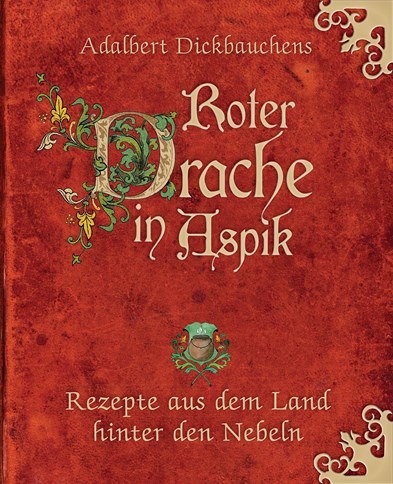Christina Widmann's Blog, page 39
April 4, 2018
A competition to celebrate World Stationery Day:
Dear Reader,
Did you know that April 25th is World Stationery Day? Neither did I. Now that we know, let's prepare to celebrate. Because readers love stationery. I'm always looking for excuses to add more notebooks and pens to my collection. And now I'm hoping for a set of planners. Old English Company is running a contest on their website. The prize: these four beauties.

Four of them. You read that right. You'll have a planner for this year and three to come. Or you can share the joy, keep your favourite and give three away to stationery loving friends. You can take a closer look at each planner on the Old English Company website.
How do you win? Three easy steps:
You'll find instructions and an e-mail address. Take a picture of your favourite item of stationery and e-mail it to the address before April 25th. Old English Compay will select a winner on April 26th and notify them.

I already sent a picture of my current favourite, a Flügeldorf 2.0 mm mechanical pencil. What's your favourite item of stationery? Send a picture to Old English Company and leave a comment below!
Yours sincerely
Christina Widmann de Fran
April 2, 2018
Richard von Schirach: Der Mann, der die Erde wog
Sehr geehrter Herr von Schirach,
was muss es für eine Arbeit gewesen sein, alle diese Lebensläufe zusammenzusuchen: Bolzmann, Cavendish, Julius von Mayer, Robert Brown, Bunsen, Kirchhoff, Planck, Michelson, Nernst, Lindemann, Tizard, Born und sein Zirkel in Göttingen, die Kapitza-Gruppe, Oppenheimer. Von jedem haben Sie Fotos, von vielen zitieren Sie Briefe. In Ihrem Buch steckt Fleiß, das sieht man. Was ich vermisse, ist Talent.
Sie versprechen Geschichten, Herr von Schirach, aber Sie erzählen keine. Sie berichten, papiertrocken. Der Mann, der die Erde wog wird seinem dramatischen Titel nicht gerecht. Das liegt zum einem an Ihrem Stil, ausgetrocknet im Staub hunderter Archivseiten. Jahreszahlen schlage ich anderswo nach, in einer Biographie will ich ein Leben. Zum anderen beginnen und enden Ihre Biographie-Schnipsel fast willkürlich. Gerade, als es in Oppenheimers Leben spannend wird, hören Sie auf.
Und wie funktioniert nun Cavendishs Gravitationswaage? Wie maß Michelson die Lichtgeschwindigkeit? Ihr Buch handelt von Menschen, nicht von deren Entdeckungen. Aber wenn Sie von einem halb durchlässigen Spiegel B schreiben und Abständen zwischen B und dem Spiegel M, dann gehört auf dieselbe Seite eine Schemazeichnung des Aufbaus. Entweder, Sie erklären eine Entdeckung ganz, oder Sie erwähnen nur ihren Namen und lassen den Rest weg. Halbe Erklärungen frustrieren mich ungemein.
Hochachtungsvoll
Christina Widmann de Fran

Der Mann, der die Erde wog: Geschichten von Menschen, deren Entdeckungen die Welt veränderten von Richard von Schirach
erschienen im Oktober 2017 beim Bertelsmann-Verlag
Ich danke für ein Rezensionsexemplar.
Leseprobe kostenlos herunterladen
ISBN: 978-3570102589
Erhältlich als Buch und eBuch bei Amazon.de.
March 23, 2018
R.K. Syrus: Sienna McKnight
Dear R. K. Syrus,
Thanks for sending Sienna McKnight as a Goodreads giveaway. Here's a review.
You call your novel a Sci-Fi technothriller. Let me add that there's a fantasy element, too. It's one of the first things we learn about the protagonist Sienna McKnight. She's twelve years old in the first chapter. A psychic ability, some kind of telepathy, saves her from a rabid wolf in a suspense-packed scene. We start believing that this is going to be her superpower. Sienna just has to find out how to use it. But no. The telepathy vanishes never to appear again. Why is it there at all?
You jump several thousand miles to the south and several years into the future. Second Lieutenant Sienna McKnight is in Antarctica on her first classified deployment. You describe her waiting for the commanding officer on six pages, in such detail that I believed the South Pole mission was going to be a vital part of the plot. It's not. They seem to have retrieved a vital item, but we don't see them do it. After the six pages, you fast-forward several months. The Antarctica deployment becomes a noodle incident that characters keep referring to, but the reader never finds out what happened. And there's another: the Battle of Beast March. Characters talk about it several times. Something awful went down in Sienna's fist year as a cadet. We hear little about it. This bugged me throughout several chapters.
I see two possibilities, Mr. Syrus: Either, you saved Antarctica and Beast March for a prequel. There is one in the list of planned volumes at the end of the book. In that case, the prequel should be Book 1, not a skippable Book 0.5. Sienna McKnight should be Book 2. And you could leave out the waiting scene at the South Pole. Or, you aren't going to write about those two incidents at all. In that case, you waisted two perfectly good plots and got on my nerves for way too many pages about nothing.
The actual plot begins on page 27 with Sienna trying to get clearance for a top-secret mission in Khorasan, a refugee state near the Gulf of Oman. This plotline is a little confusing, as in, I am missing some background. How does Sienna know that Asrah Qazi is the man she needs to hunt? And how does she know that the man code-named Sidewinder has the information she needs? Are you planning to put this in the prequel, too? You are the first author I have come across who starts publishing a series with the non-standalone second volume.
Let's talk about the parts of the plot you do spell out. I liked the scene with the wheelchair-turned-tank. Good comic relief. I also liked Sienna's mission in Khorasan and the survival fight it turns into. Just the right balance between suspense and action.
Sienna, the heroine, gets a little too powerful for my taste. Everything seems too easy with her nearly unlimited power. Might be because I don't read many superhero novels. As a person, she's ok.
Let's talk about style. The chapters in the past - from Sienna's childhood and Antarctica - are in the past tense. The main plotline is in the present tense. Logical at first glance. But readers today are used to the past tense in storytelling. The present tense calls attention to itself, that means, away from the story. Backward sentences are sometimes in simple past, sometimes in pluperfect, but always awkward. Since Sienna McKnight is set in the future anyway, you could have used the past tense.
One question bugs me as a linguist, Mr. Syrus: Why the is the racht called a racht? Why is there a sentence in Welsh or Irish or Scottish Gaelic, I don't know which, in the middle of the book when Sienna doesn't even speak the language? What ever it is got into her in Khorasan. That's far away from the British Isles. You'll probably answer this question in a future volume. I don't know if I'm going to read it. Sienna McKnight has the suspense and the action and the unpredictable plot, but it tastes too half-baked for my liking.
Yours sincerely
Christina Widmann de Fran


Sienna McKnight is the first book in the New Praetorians series by R.K. Syrus.
Published in 2017 with Yuan Kun Publishing Ltd.
ISBN: 9781910890066
Get your copy on Amazon.co.uk.
March 22, 2018
Joe Kirschvink, Peter Ward: Eine neue Geschichte des Lebens
Lieber Leser,
über die Geschichte der Erde und des Lebens auf ihr hat man in letzter Zeit viel herausgefunden. Daher dieses Buch. Es fasst den aktuellen Stand der Forschung zusammen: Was man weiß, wie man das herausgefunden hat, und welche Fragen noch offen sind.
Im ersten Kapitel zeigen die beiden Autoren die geologische Zeitskala vom Hadaikum bis zum Neogen. Sie erzählen ein bisschen, wie die Einteilung zustande kam. Diese Skala habe ich mir herauskopiert und das Blatt als Lesezeichen verwendet. So konnte ich immer wieder nachschauen, wo wir gerade waren, wenn die Autoren zum Beispiel schrieben, dass ein bestimmtes Fossil 288 Millionen Jahre alt ist.
Die Urzeit der Erde, als Leben noch gar nicht möglich war, bekommt nur einen kurzen Abriss. Dann folgt die Entstehung des Lebens. Hier weiß man wenig, aber Möglichkeiten gibt es viele. Kirschvink und Ward beschreiben sie alle, von Darwins Tümpel bis zum Asteroiden vom Mars.
Nachdem das Leben einmal entstanden ist, weiß man mehr. Die Autoren erzählen vor allem von den Katastrophen, den Massensterben. Aber sie müssen sagen, wer da starb, und so ist die Neue Geschichte des Lebens ein ausführliches Buch über die Evolution im Meer und an Land. Auch hier gibt es viel, was man in letzter Zeit neu herausgefunden hat.
Den Dinosauriern gehörte die Welt vergleichsweise kurz. Trotzdem forschen hier die meisten Paläontologen. Kein Wunder, haben sie doch alle als Kinder mit einem Bilderbuch über T. rex angefangen, sich für Fossilien zu interessieren. Kirschvink und Ward forschen an älteren Gesteinsschichten. Trotzdem widmen sie den Dinosauriern ein ausführliches Kapitel. Treu ihrem Titel schaffen sie es, selbst hier etwas Neues zu erzählen: warum die Dinosaurier überhaupt so erfolgreich waren. Es lag an ihren Lungen.
Die Weltgeschichte auf 400 Seiten zusammenzufassen ist sicher nicht leicht. Deshalb können die Autoren nicht alles haarklein erklären. Ein bisschen Vorwissen braucht der Leser: mindestens zehnte Klasse Gymnasium oder ein paar leichtere Bücher über die Evolution. Mir hat gerade das fachliche Niveau in diesem Buch gefallen. Es gab kaum etwas, das ich schon wusste. Gleichzeitig erzählen Kirschvink und Ward alles so lebendig, dass sich das Buch fast von selber liest.
In der Einleitung und im letzten Kapitel musste ich lächeln. Die beiden Autoren warnen dort vor dem Klimawandel, was in wissenschaftlichen Büchern schon zum Pflichtprogramm gehört. Andererseits zeigen sie, dass im Laufe der Weltgeschichte der CO2-Gehalt der Atmosphäre immer weniger geworden ist, und dass es insgesamt immer kälter wurde. Ihr Ausblick in die Zukunft führt deshalb nicht in eine menschengemachte Wüste, sondern in eine Welt, wo die Pflanzen kein CO2 mehr zum atmen finden. Und dann folgt nochmal ein Absatz über den Klimawandel, als hätte der Lektor ihnen angedroht, das Buch sonst nicht zu drucken.
Insgesamt eine uneingeschränkte Leseempfehlung.
Hochachtungsvoll
Christina Widmann de Fran

Eine neue Geschichte des Lebens: Wie Katastrophen den Lauf der Evolution bestimmt haben von Joe Kirschvink und Peter Ward
Originaltitel: A New History of Life
erschienen: 2015 bei Bloomsbury
ISBN: 9781608199075
Deutsche Übersetzung: Sebastian Vogel für DVA Sachbuch
Ich danke für ein Rezensionsexemplar.
ISBN: 978-3-421-04661-1
Leseprobe kostenlos herunterladen
March 20, 2018
When a critic becomes an editor: Cold-Blooded
Dear Reader,
When I was in seventh grade, my dream job was to become an editor. Read books and get paid for it - can you imagine a better life? And if you're working for a publishing company, you get to decide which books get printed. It's probably good that I don't do that. Half of today's best sellers would have died in a desk drawer if I had a say.
But deciding what gets published is only a small part of the editor's job. The greater part is helping authors to create a better version of their manuscripts, line by line. I got to do that with Cold-Blooded, the second volume of the Mattie Saunders series by Rod Raglin. You can read my review of the first volume The Rocker and The Bird Girl here. I liked the first book, but criticized the typos and general lack of editing. For this second volume, Mr. Raglin sent me the next-to-final draft and I took a red pen to it. It was fun. It was a challenge, too, but mostly fun.
I marked errors and scribbled suggestions on the margins until the manuscript was bleeding ink. Then I sent the battered thing back to the author together with a detailed review of story and characters. Mr. Raglin nursed his story back to health and wrapped it in a book cover. The final version of Cold-Blooded came out in february. The differences between the draft and the finished book are fascinating. The scary parts got even scarier. The dog is gone. (Sorry for that.) A big question that stayed open in the draft gets an answer now. A bloodcurdling one.
But wait, you say. Scary? Bloodcurdling? Wasn't the first book a YA romance? Yes, the first book was. The second book contains romance, too. But the story of Mattie Saunders takes a turn for the darker in Cold-Blooded. There's a dead body in this one, and several venomous snakes. This series is unpredictable. What will the third volume be? Only the author knows.
If you're an author, and if you're now wondering if I would read your next manuscript, here's the answer: Yes, I will. I will beta-read, proofread and line-edit manuscripts in German, English and Spanish. Just send them to Manuscriptia.

You can currently win an ebook copy of Cold-Blooded on booklikes. The giveaway ends on april 16th. Or buy both books of the Mattie Saunders Series on Amazon:
The Rocker and The Bird Girl
Cold-Blooded
Visit the author on his blog Writing - the experience.
Yours sincerely
Christina Widmann de Fran
March 17, 2018
Stephen Hicks: Explaining Postmodernism
Dear Mr. Hicks,
thanks for letting people download your book Explaining Postmodernism for free off your website. It's an important work that explains a lot about what's happening at the moment in our society.
Postmodern, to me, until yesterday was a term from the history of literature. Postmodern literature came after the modern identity-seeking authors of the 20th century. Postmodernism as a philosophy is older, and it's something else. It's the philosophy behind today's third-generation feminism, multiculturalism and related movements.
In the first chapter, you provide an overview of what Postmodernism is. Then, in several chapters, you explain its roots in the writings of Kant, Hegel, Nietzsche and other philosophers. I found it fascinating. Other readers might skip these parts. But I recommend that everybody should read your chapters about what happened to socialist thinkers when socialism failed. And the last chapter, which is the most enlightening of them all.
You explain the contradictions in radical feminists' speeches: how they can, at the same time, demand equality for women and deny that biological sexes exist. How they can call others racists and sexists and identify themselves with their race and sex. How they can demand compassion for the weak and the helpless and be in favor of abortion. You explain where the hatred comes from. Postmodernists aren't for anything, they are only against. When facts, logic and reason prove that they're wrong, they deny that logic and reason and truth even exist.
The last paragraph of your book is dedicated to Post-Postmodernism: What must come after this nihilistic, cynical, hateful movement? How can we defend ourselves against their hate? You don't give an answer, only the question. How can we convince people of the truth when they deny that such a thing as truth exists? What logic can we use when they say that logic and reason are relative? Can we, and how can we, pull these people out of their hatred?
More urgent is the question: How can we stop their politics? How can we stop them from taking over public schools? In several countries, so-called feminists are trying to put their worldview into schoolbooks. How can we stop them from brainwashing our children, from passing on their hatred to the next generation?
Yours sincerely
Christina Widmann de Fran

Explaining Postmodernism: Skepticism and Socialism from Rousseau to Foucault by Stephen R. C. Hicks
is available for free as a PDF on his website www.stephenhicks.org.
Get a paper copy from Amazon.com or Amazon.co.uk.
March 10, 2018
Xaviant Haze: Ancient Giants
Dear Mr. Haze,
You organized your book about Ancient Giants by regions: the British Isles; France and Spain; Egypt, Syria, Iraq and Iran; etc. Within each region you describe old myths and recent archeological findings. I think you could have organized the book in a different manner: by eras. Mixing together monolithic dolmens, findings from the early stone age and comparatively modern sources (about things that happened, if you take the stories at face value, some 4 000 years ago) is, at a closer look, hurting your hypothesis of an ancient race of giants. If there was a race, or several, there must be a time when they emerged and a time when they disappeared, and a continuous line of fossils and remains for the timespan in between. Or did the giants appear in several places, at several points over the course of ancient history, only to disappear again each time?
In another way are you hurting your own hypothesis, Mr. Haze. On some pages, you talk about huge skeletons that farmers or archeologists found. Most of those skeletons disappeared without a trace. This, together with the monoliths in Russia, is evidence. It makes me wonder. But this kind of evidence makes up only a small part of the book. The rest is easy to explain.
Let me tell you a joke we have in Germany. A little boy asks his mother: "Mum, how fast does a pike grow?" - "I don't know, dear. Why do you ask?" - "Because dad caught a pike the other day. And each time he tells about it, it's three inches longer."
Something similar might have happened with the story of David and Goliath. The Hebrews were mighty proud of their victory over the Philistines. When they came home and told their wives and children about it, they maybe exaggerated a little. And many years later, when they told their grandchildren about that memorable day, maybe they exaggerated a little more. Doesn't that sound probable, Mr. Haze? It sounds even more probable if we take into consideration that David became king later. People would exaggerate his prowess to flatter him. And later generations would exaggerate even more, exalting him into a mythological hero, and thus exalting themselves as his descendants. And so Goliath, the tallest of the Philistines, turned into a giant.
But the story of David and Goliath is only one of many that you cite as proof that giants existed. You talk about the Gauls and Germanians, those Celtic people that Julius Caesar fought against. Roman authors call them tall, fierce and unkempt. But nowhere do they call them giants. The average French or German man today is taller than the average Italian. The difference might have been (or looked) bigger in ancient times. And probably the Romans exaggerated a bit when they came home, to make themselves look better when they lost - which they did sometimes - but also to make themselves look better when they won. The Gauls and Germanians were tall, fierce warriors, but they were men.
Then there's Maximinus Thrax, emperor in the later days of Rome. You speculate he might have been a descendant of the Gaulish "giants". His name Thrax means that he was born close to the Black Sea, far from Gaulish territory. Roman historians describe Maximinus Thrax as tall and strong, but they don't say how tall he was. Coins show his face with a bulging brow. His nose and chin are knubby, his ears rather large. It looks like acromegaly to me, a symptom of a growth hormone disorder. The tallest people living today all suffer from this disorder. Their faces look similar to the face on the coins of Maximinus Thrax. In the last two centuries, several men and one woman have surpassed eight feet (2,44 m). The tallest man to ever be measured, Robert Wadlow, stayed just a thumb's breadth short of nine feet. He stood 2,72 m tall. Wadlow was the son of normal-sized people. A giant, but not from an ancient race. A huge man, but a man.
Darius, King of Persia was depicted taller than his captives. This alone doesn't make him a giant. Painting the important figures larger or more colorful than the rest is common practice in art. The Egyptians did it in all their wall paintings: The pharao appears triple the size of his enemies. But we have the mummies and sarcophagi of several pharaos. They were normal-sized people. Gilgamesh might or might not have existed, and he might or might not have been a giant. But you suggest that the USA went to war in Iraq because they wanted to stop archaeologists from excavating the ancient city of Uruk, where Gilgamesh's tomb might be. Do you really believe that?
I think all stories come from somewhere. But we must be cautious in our interpretations. In the Irish Battles at Mag Tuired, the legendary Tuatha De Danann come over the sea in ships. You conclude that they had spaceships. Why? Ships of wood were common and fit the context of the legend.
This kind of conjectures, so easy to refute, will make the public overlook the more credible parts of your work. In most chapters of Ancient Giants, you sound like a child who wants Santa Claus to be real. Rather than accept it's just a story and that reindeer don't fly, this child prefers to believe in a global conspiracy of adults who are pretending that parents bring the gifts. It's a pity your book should sound like this because I think you didn't mean it to. The constant conspiranoid jabs against academia and mainstream science aren't likely to get you taken seriously. They make you sound even more like a petulant child.
I think you should write a shorter version of Ancient Giants, Mr. Haze. Not a book, just an article for a major scientific journal. Concentrate on those archeological findings that can't be explained with pituitary gland tumors. Mention the mythology in a single paragraph. Two pages of irrefutable truth would accomplish what two hundred pages of guesses and conjectures won't: make people wonder if there's more to ancient history than we know.
Yours sincerely
Christina Widmann de Fran

Ancient Giants: History, Myths and Scientific Evidence from Around the World by Xaviant Haze
is going to be published in June, 2018 with Bear & Company.
Thanks for the review copy.
ISBN: 9781591432937
You can pre-order a copy on Amazon.com.
March 9, 2018
Adalbert Dickbauchens Roter Drache in Aspik
Edler Herr Dickbauchens,
Euer Buch über die Küchenkunst hat mich sehr erfreut. Der Immerfisch mundet hervorragend. Und die Knurkselblampsch-Pfanne schmeckt, trotz ihres Namens, äußerst delikat.
Mit Scham muss ich zugeben, dass ich weder einen Vogel Rock erlegen noch Fraßpilze sammeln konnte. Nicht einmal ein Wolpertinger war aufzutreiben. Aber Euer Herausgeber hat gütigst angemerkt, dass ich anstelle des Basiliskenfilets ein gemeines Stück Schweinefleisch verwenden darf. Der gute Mann rechnet freundlich die Maßeinheiten um und hat auf den Rand de Buches gekritzelt, wie heiß ich den Elektroherd vorheizen muss.
Nun bin ich sicher, dass ich mich auf allen Abenteuern werde zu ernähren wissen, in dieser Welt und in vielen anderen. Jedem Gast, sei er Elb, Zwerg oder Riese, kann ich ein schmackhaftes Mahl vorsetzen. Meine bescheidene Menschenfamilie lobt Eure Gerichte, erfreut sich an den klingenden Namen und schmaust, bis Tafel und Weinkeller leer sind. Darum sei hier vermerkt, dass ich Euch zu großem Dank verpflichtet bin. Solltet Ihr mein bescheidenes Dorf einmal mit Eurer Anwesenheit beehren, so werden Euch meine Küche und meine Stube offen stehen.
Ergebenst
Eure
Christina Widmann de Fran

Adalbert Dickbauchens Roter Drache in Aspik: Rezepte aus dem Land hinter den Nebeln von Adalbert Dickbauchens, herausgegeben von Sascha Storz
erschienen: 2014 bei Bassermann
Ich danke ergebenst für ein Rezensionsexemplar.
ISBN:978-3-641-59554-8
Erwerbt Euer Exemplar auf Amazon.de.
March 8, 2018
Nico Fauser: Was wir denken, wenn wir uns ein Ei kochen
Lieber Herr Fauser,
spaßige Diagramme kursieren im Internet viele. Ein Buch damit zu füllen war eine naheliegende Idee. Sie packen die großen und kleinen Absurditäten des Lebens in Grafiken wie die folgenden zwei:

Bei Ihnen passt alles entweder in ein Torten- oder ein Balkendiagramm oder eine Kurve. Etwas mehr Abwechslung hätte ich mir gewünscht, oder Grafiken, die besser zum Inhalt passen. Das mit den Stützrädern zum Beispiel eher als Balkendiagramm. Und das mit dem Interesse für Statistik als Kurve oder Zeitstrahl.
Was wir denken, wenn wir uns ein Ei kochen ist dennoch ein amüsantes Buch. Sie haben einen guten Blick dafür, was wir Menschen so alles an Widersinnigem denken und tun.
Hochachtungsvoll
Christina Widmann

Was wir denken, wenn wir uns ein Ei kochen: Unser Leben in 250 Grafiken von Nico Fauser
erschienen am 27. März 2017 beim Mosaik-Verlag.
Ich danke für ein Rezensionsexemplar.
Leseprobe kostenlos herunterladen
ISBN:978-3442393169
Erhältlich auf Amazon.de.
March 7, 2018
Bahar Yilmaz, Pascal Voggenhuber: Yoga Siddhis
Liebe Frau Yilmaz, lieber Herr Voggenhuber,
Yoga Siddhis ist das Gemeinschaftsprojekt eines Hellsehers und einer Yogalehrerin. Sie, Herr Voggenhuber, schreiben, dass die Auren von Frau Yilmaz' Yogaschülern ihnen besonders vorkommen, und dass Yogis etwas mit Medien und Hellsehern gemeinsam haben. Sie, Frau Yilmaz, finden in alten indischen Texten Hinweise auf die Siddhis, die übersinnlichen Fähigkeiten von Yoga-Meistern. Gemeinsam haben Sie beide ein Yoga-Programm erarbeitet, das helfen soll, Siddhis zu erfahren, also außersinnliche Fähigkeiten. Herr Voggenhuber schreibt von den Hellsinnen, die er öffnen und schärfen will.
Eine Frage an Frau Yilmaz: Haben Sie ihr Programm selbst ausprobiert? Haben Sie inzwischen Hellsinne?
Vieles in den esoterischeren Kapiteln liest sich für mich wie reine Seitenfüllerei. Oder wie Kant, der hinter einem verdrehten, unverständlichen, unglaublich schwierigen Deutsch versteckte, dass er in Wahrheit gar nichts zu sagen hatte. Oder nicht verstanden werde wollte. Genauso verstecken Sie, Frau Yilmaz, sich hinter Sanskrit-Wörtern und Zirkelsätzen. Klingt eindrucksvoll, aber einmal übersetzt mit dem Glossar hinten im Buch, und heruntergekürzt auf das Wesentliche, bleibt kaum etwas übrig. Auch auf Deutsch bleiben Sie gekonnt vage. Ich darf zitieren: "Während des körperlosen Wanderns sind die gedanklichen Bewegungen nicht fassbar und werden als etwas außerhalb des Körpers empfunden. Dadurch löst sich allmählich der Schleier vor dem lichtvollen Licht." (Seite 50). Wann sind gedankliche Bewegungen denn jemals fassbar? Was sind gedankliche Bewegungen überhaupt? Und ein lichtvolles Licht - gibt es ein lichtloses?
Noch ein Zitat von derselben Seite: "Die Naturwissenschaft bestätigt, dass Materie Energie in Bewegung ist." Könnten Sie mir verraten, Frau Yilmaz, welcher Naturwissenschaftler das gesagt hat und wann und in welchem Zusammenhang? Das mit der Energie in Bewegung klingt erst einmal nach Quantenphysik oder nach Stringtheorie, aber ich konnte dort nichts dergleichen finden.
Die Kapitel von Herrn Voggenhuber sind nicht ganz so verdreht. Aber auch er hütet sich davor, klare Aussagen zu treffen, auf die man ihn festnageln könnte. Was Sie der Geistigen Welt alles an Bewohnern zuschreiben! Da mischen Sie Bibel, Buddhismus und Ahnenkulte fröhlich zusammen zu einem regelrechten Fantasy-Roman.
Kommen wir zu den Übungen, die helfen sollen, einem Menschen über- oder außersinnliche Fähigkeiten zu verleihen. Ihr Programm umfasst 18 Stück. Ein Kurzprogramm mit nur acht Übungen haben Sie auch, für Tage, an denen man keine Zeit hat für die Langversion. Zwei- oder dreimal pro Woche soll man Ihre Übungsreihe machen, dann erweitern sich die Sinne. Ich bin inzwischen zwei Wochen dabei. Übersinnliche Wahrnehmungen merke ich noch nicht. Zwei Wochen, werden Sie sagen, das ist ja auch viel zu kurz. Aber wie viel ist lang genug? Nirgends in Yoga Siddhis sagen Sie, ab wann ich eine Wirkung erwarten darf. Dauert es Monate, Jahre, Jahrzehnte? Sie verraten es nicht, und halten sich damit eine bequeme Hintertür offen. Jedem, der mit Ihren Übungen keine Siddhis erfahren hat, können Sie sagen, dass er noch nicht lange genug geübt hat.
Was für ein Gegensatz dazu die körperlichen Auswirkungen von Yoga! Schon bei der zweiten Sitzung merkt man, dass man weiter hineinkommt in die dehnenden Übungen. Die Körperhaltung wird in zwei Wochen sichtbar besser, und den Trainingseffekt auf die Muskeln bemerkt man schnell. Das spornt an, weiter zu machen. Ich werde einige der Asanas aus Yoga Siddhis weiter üben, weil sie mir körperlich guttun. Und vielleicht stellt sich in zehn Jahren der Effekt ein, den Sie im Klappentext versprechen. Falls ja, werden Sie es hier erfahren.
Hochachtungsvoll
Christina Widmann de Fran

Yoga Siddhis: Der geheime Weg zu Sensitivität und Medialität von Bahar Yilmaz und Pascal Voggenhuber
erschienen: 2011 beim Lotos-Verlag.
Ich danke für ein Rezensionsexemplar.
ISBN: 978-3778782286
Erhältlich auf Amazon.de



